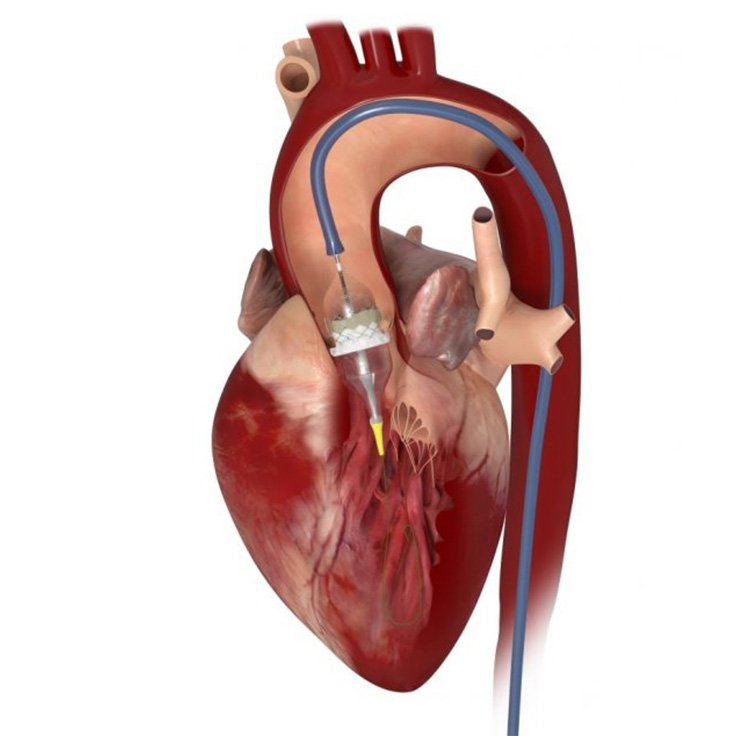Transcatheter Aortic Valve Replacement (TAVR)
TAVR is particularly beneficial for patients who are at high or intermediate risk for complications from traditional open-heart surgery. It provides quicker recovery times, less pain, and a shorter hospital stay.
Benefits:
• Less invasive compared to open-heart surgery
• Reduced recovery time
• Immediate improvement in symptoms such as chest pain, shortness of breath, and fatigue
Risks:
• Stroke, bleeding, or vascular complications (although rare)

Youtube Link – https://www.youtube.com/watch?v=f20qrZcD1LE
Device closures are minimally invasive procedures used to close abnormal openings in the heart, such as those caused by congenital heart defects. These defects can result in abnormal blood flow between heart chambers or major arteries. Common defects treated with device closures include:
- Atrial Septal Defect (ASD): An abnormal hole between the heart’s two upper chambers (atria). A special device, often resembling a small umbrella, is placed via catheter to close the hole and restore normal blood flow.
Youtube link https://www.youtube.com/watch?v=rR53BKigQD4
- Ventricular Septal Defect (VSD): A hole between the heart’s lower chambers (ventricles) is closed using a similar catheter-based device.
- Patent Ductus Arteriosus (PDA): A congenital condition where a blood vessel connecting the aorta and pulmonary artery remains open after birth. A closure device is used to seal the vessel.
These procedures eliminate the need for open-heart surgery, offer faster recovery, and are highly effective in correcting heart defects in both children and adults.
